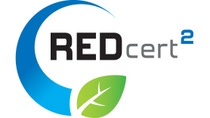Sustainability
BASF's biomass balance approach: saving fossil resources in the production of EPS

The biomass balance method (BMB), certified by German technical inspection authority REDcert2, means that fossil raw materials required for the manufacture of EPS (expandable polystyrene) can be replaced with renewable feedstock. Production methods of this kind save valuable resources and reduce CO2 emissions at the same time. The use of biomass-balanced Styropor® and Neopor®, known as Styropor® BMB and Neopor® BMB for short, protects the environment and the climate while maintaining the usual high quality. This is because they are identical to their fossil equivalents in terms of their formulation and properties.
The Ellen MacArthur Foundation's Circular Economy (CE) 100 network, just as BASF, supports the mass balance approach as a way to promote circular economy in the chemical industry. The common White Paper by the CE100 network describes the theory and practice of mass balancing in detail. The collaborative project (co.project) provides an opportunity to examine sustainable innovations in a pre-competitive context to overcome general obstacles and increase the pace of change. With insulation boards made of Neopor® BMB and packaging solutions made of Styropor® BMB, BASF already offers its customers certified products according to the biomass balance approach.

Construction
Sustainable Building: How to improve your carbon footprint with Neopor® solutions from BASF

1 Calculation of CO2 storage in woodland areas is based on the current CO2 levels found in German forests. In Germany, one hectare of forest stores around 13 tonnes of CO2 per year averaged across all ages and species. (Stiftung Unternehmen Wald, 2018).
Packaging

1 Calculation of the CO2 reduction in the Verbund simulator is based on BASF’s own cradle-to-gate calculations.
2 In 2016, the recycling rate in Germany was approximately 50% (see “Generation and Management of EPS and XPS Waste in 2016 in Germany in the Packaging and Building Industries” commissioned by BKV GmbH).
3 Calculation based on a car that consumes 7 L of petrol per 100 km, thus burning 2.33 kg CO2 per litre of fuel. (Spritmonitor.de, 2018)
